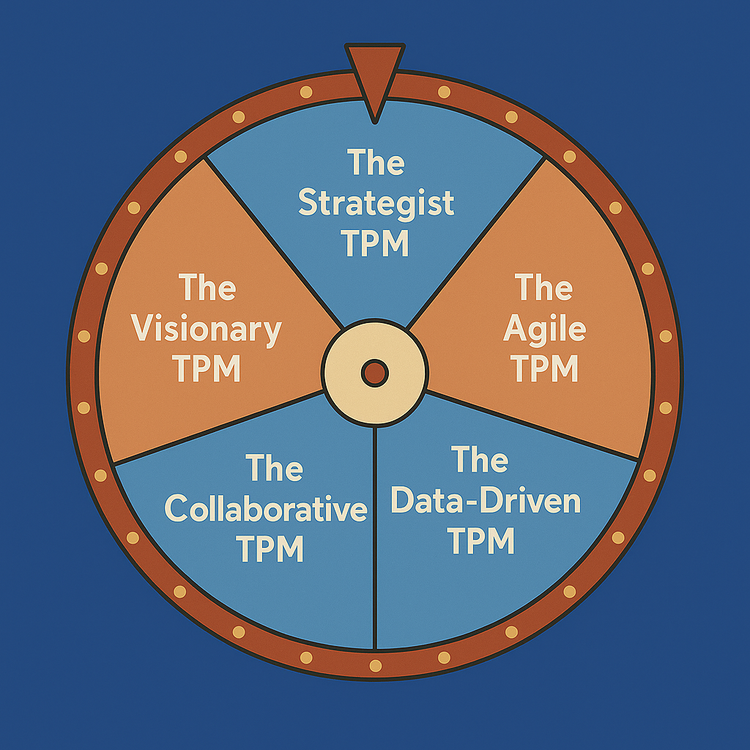Are TPMs Still Worth It?

Rethinking the Role in a Post-Layoff Tech World
There’s a morbid joke going around in tech circles that goes something like: If the company’s cutting costs, TPMs get to skip to the front of the line. It’s not exactly fair, but its also complicated .
Over the last two years, tech layoffs have turned from shock headlines into quarterly rituals. Meta, Google, Amazon, Microsoft, and no one’s sacred. As headcount shrinks, the conversation inevitably turns to roles that aren’t directly shipping code. TPMs often (inevitably) find themselves in the spotlight.
So the question must be asked: In a world where efficiency is the new moonshot, is investing in a TPM career still worth it?
Let’s explore this a bit more.
The Layoff Lens: Are TPMs Actually the First to Go?
Anecdotally, yes, TPMs are frequently among the first roles trimmed in layoffs. They’re often seen as “glue people,” valuable when scaling fast but expendable when belts tighten. In 2023, Meta cut hundreds of TPMs and project managers in what was labeled their “year of efficiency.” Google’s internal reorganizations reportedly deprioritized program managers in favor of flatter structures and fewer middle layers.
The reasoning isn’t always malicious. It’s often pragmatic: when you have fewer initiatives, you need fewer people to coordinate them.
But here’s the twist: the best TPMs are rarely the ones let go. Because while the title says “program,” the top performers deliver strategy, alignment, and executional clarity—things that only become more vital when resources are constrained. You can think of yourself in a stack, with other TPMs. They cut from the bottom, while they retain the top, and there’s a cut-line somewhere in-between.
See why we rely on Fastmail to power all our emails
What Makes TPMs Vulnerable (and What Makes Them Invaluable)
There’s a reason TPMs get misjudged. The role is wildly inconsistent across companies, and we’ve talked about this before in prior articles. At one org, a TPM is a glorified project tracker. At another, they’re de-facto a technical COO. When layoffs hit, the vague ones go first. Let’s put TPMs into two buckets, the most valuable and the most indispensable:
The most vulnerable TPMs:
- Rely on JIRA dashboards and meeting minutes to define their value
- Don’t understand the technical stack they’re wrangling
- Serve as middlemen between teams that could probably talk directly
The most indispensable TPMs:
- Run complex cross-org initiatives that would fall apart without them
- Speak fluent engineer and fluent exec
- Proactively manage risk, not just update status
This is where the role either fades into the background or becomes mission-critical. And that’s the key: being a TPM is worth it if you’re doing it at the level where your absence would be noticed.
The Macro Trends Are Mixed—but Not Hopeless
Let’s be clear: TPM hiring has slowed. According to Layoffs.fyi, program and operations roles were among the most impacted in 2023 and early 2024.
And yet… look at job boards at high-functioning companies like Stripe, Databricks, or Netflix, and you’ll still find TPM listings, just fewer of them, and with steeper bars. It’s quality over quantity now. TPMs are no longer the default solution to org chaos; they’re the surgical hires for solving scaling bottlenecks and accelerating execution.
It’s also worth noting that AI and automation are shifting the landscape. If your value is in compiling updates or coordinating meetings, AI can (and will) do that faster and cheaper. But if your value is in interpreting ambiguity, unblocking humans, and navigating organizational politics, you’re not as easily replaced.
Back to the Question… Is It Worth It?
If you’re considering entering or staying in the TPM field, here’s the real answer: It’s worth it if you evolve.
The golden era of TPM as a catch-all fixer is over. But the era of TPM as the strategic execution partner is just getting started. Companies will always need people who can drive complex programs to done, especially in highly regulated, multi-stakeholder environments.
To future-proof yourself:
- Learn the tech. You don’t need to code, but you do need to grok the system architecture and why things break.
- Build influence, not just process. Your meetings should have decisions, not just attendees.
- Tie yourself to outcomes. Business impact. Customer metrics. OKRs that matter.
- Learn to wield GenAI and automation. Let AI write the status reports—you write the roadmap. Make your hours count.
My Final Thoughts…
No, TPMs aren’t obsolete. But lazy TPMing? That definitely is.
The role is shrinking in volume but rising in expectations. If you can rise with it, become the TPM who delivers clarity in chaos, who translates ambiguity into action, who removes blockers before the team even sees them, then yes, it’s worth it. But if you’re just running meetings and nudging Jira tickets, you might want to sharpen your résumé—or better yet, your skill set.
Suggested Hashtags
#TPMLife #TechCareers #Layoffs2025 #ProgramManagement #FutureOfWork
#ExecutionExcellence#AIandWork #StrategicOps #CareerAdvice
Want a slide version of this for your next TPM community meetup or internal town hall? Just say the word.





Member discussion